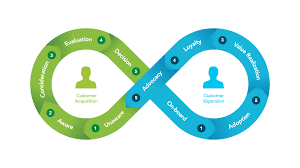How do manufacturers use the TPG Loop?
Connect demand, RFQs, quotes, installs, and service into one governed operating model—implemented on HubSpot and measured on a single revenue scorecard.
Manufacturers use the TPG Loop to connect demand generation with quoting, fulfillment, and aftermarket growth. Standard definitions and RFQ/lead SLAs ensure fast handoffs to sales or channel partners; product-interest signals (spec/BOM downloads, configurator outputs) route to the right rep or dealer. Post-sale, warranty, service, and parts workflows feed health scores and expansion plays. One scorecard reports pipeline, cycle time, win rate, time-to-live, and renewal/parts revenue.
The Loop in a Manufacturing Context
 TPG Loop: acquisition (lead→RFQ→quote→order) and expansion (install→service→renewal/parts) governed by SLAs and one scorecard.
TPG Loop: acquisition (lead→RFQ→quote→order) and expansion (install→service→renewal/parts) governed by SLAs and one scorecard. Where the TPG Loop Adds Immediate Value
Manufacturing Motions Mapped to HubSpot
| Motion | Key Signals | HubSpot Objects & Automation | SLA / Outcome |
|---|---|---|---|
| Lead → RFQ | Spec/BOM download, configurator, form | Contact + Deal/Ticket; owner assign; task with due time; dealer routing | First response within 24h; app review scheduled |
| Quote → Order | Approved config, pricing sent | Deal stages; quote; e-sign; disposition codes | Quote cycle time; Win rate by segment |
| Order → Install (Go-Live) | Ship/arrive, install dates | Ticket pipeline for onboarding; tasks & checklists | Time-to-live/commissioning |
| Service & Warranty | Failure codes, CSAT, usage | Tickets; product events via Ops Hub; health score | First-time fix; contract renewal rate |
| Parts & Expansion | Usage thresholds, wear parts intervals | Deals for upsell; subscriptions; workflows & nurtures | Expansion pipeline; NRR |
How the Loop Runs Day to Day
In manufacturing, revenue spans new equipment, projects, and the installed base. The TPG Loop standardizes ICP tiers, buying roles, and stage criteria so marketing, sales, channel, operations, and service work from one playbook. When a prospect downloads specs, submits an RFQ, or completes a configurator, governed workflows assign an owner, create a due-time task, and escalate if untouched—preventing stalled quotes. Disposition and rejection codes power recycle nurtures (e.g., “budget cycle” vs. “spec mismatch”) and give product marketing immediate feedback.
For indirect sales, the Loop clarifies dealer/rep routing and influence credit. Channel partners receive qualified opportunities with context (drawings, options, application notes), while first-party engagement still accrues to a single revenue view. After a deal closes, warranty registration opens onboarding tickets; preventive-maintenance schedules, parts reminders, and training campaigns run from the same taxonomy. Service outcomes and failure codes flow back to targeting and product roadmaps.
Leaders monitor a single scorecard: sourced/influenced pipeline by segment, RFQ response time, quote-to-order conversion, time-to-live/commissioning, and service KPIs (contract renewal, NPS/CSAT, and parts margin). With this cadence, manufacturers shift budget to offers and channels that speed quotes and expand the installed base.
Frequently Asked Questions
Connect RFQs, installs, and service into one revenue loop
We’ll implement the TPG Loop on your HubSpot stack—RFQ SLAs, channel routing, and install-base workflows—so quotes move faster and aftermarket revenue grows.
Contact Us